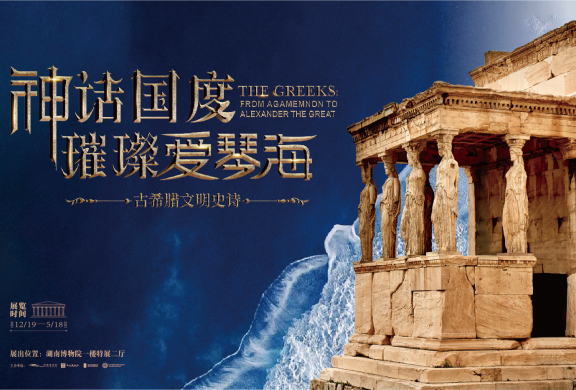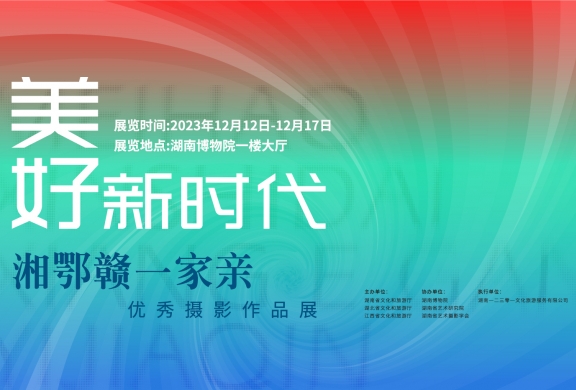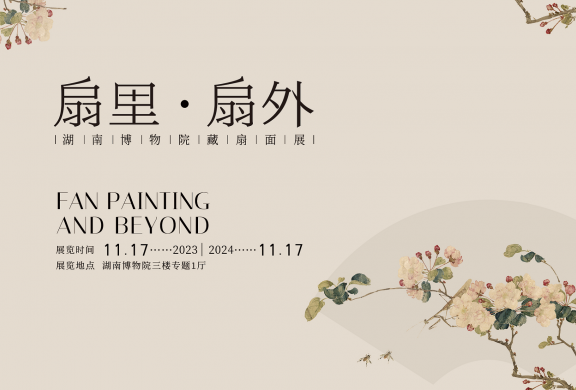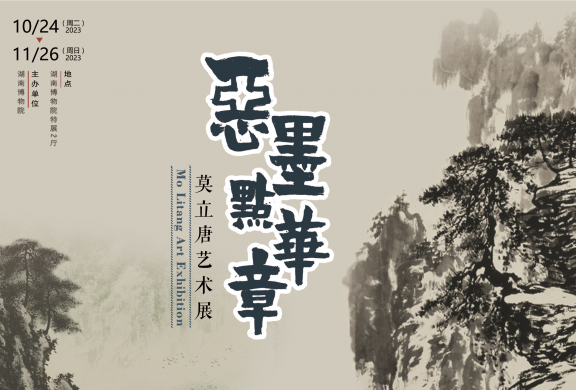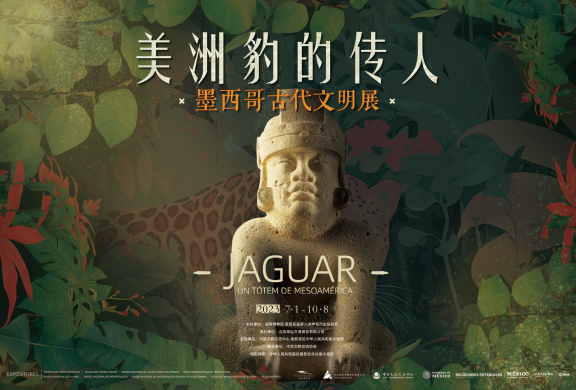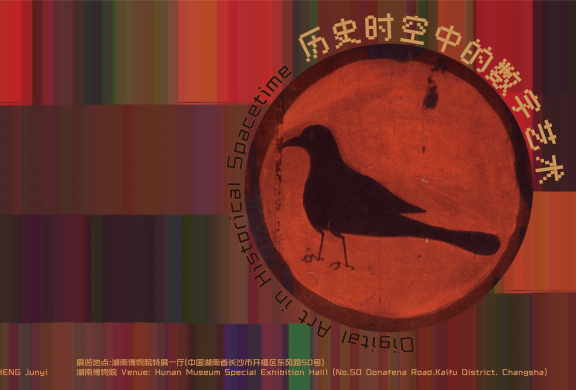Past Exhibitions
The Greeks:From Agamemnon to Alexander the GreatNo.2 Special Exhibition Hall, 1F 2023.12.18 - 2024.05.18 Traveling through history, we sincerely eulogize "Glory to Greece". The ancient Greeks drew on the essence of Egyptian civilization as well as the Two Rivers civilization, and under the distinctive natural geography and human background of the Aegean Sea region, they created a regional culture that is remarkable in the history of mankind, and from which the whole of European civilization was nurtured. Moreover, up to the present day, the progress and development of Europe, western society and even the world are still absorbing the rich nutrients of ancient Greek civilization. The exhibits come from 14 museums and cultural institutes in Greece, a total of 270 pieces/sets, including gold ware,bronze ware, porcelain and sculptures, spanning a period of 7000 years. These treasures is in the form of physical evidence to show the ancient Greek civilization since prehistory to the "Hellenistic" era of the beginning of the political, economic and cultural landscape. “Splendid civilization owing to communication, rich civilization giving to mutual understanding”, let us enter this cultural feast together, enjoy the epic grandeur of ancient Greek civilization, roam in the rippling Aegean Sea, deeply understand the diversity and commonality of civilizations, and appreciate the important meaning of the human destiny. |
Exhibition of High-quality Photographic Works of “A Beautiful New Era-the profound ties of Hunan, Hubei and Jiangxi Provinces”Art Hall, 1F 2023.12.12 - 2023.12.17 In order to adhere to the guidance of President Xi Jingping’s thought on socialism with Chinese characteristics in the new era, fully implement the spirit of the 20th CPC National Congress, thoroughly study and put Xi Jinping’s thought on culture into effect, and implement the requirements of the "14th Five-Year Plan for the Development of City Clusters in the Middle Reaches of the Yangtze River" approved and agreed to by the State Council, the Department of Culture and Tourism of Hunan Province, Hubei Province and Jiangxi Province jointly organized the exhibition of top-notch photographic works of “A Beautiful New Era-the Profound Ties of Hunan, Hubei and Jiangxi Provinces”. The exhibition aims to show the beautiful natural scenery, rich cultural heritage and the spirit of people's life in the new era of three provinces through a number of high-quality photographs, and to promote the exchange, unity and collaborative development of culture and tourism of three provinces. Photography is an art form to narrate through the lights and shades. Photographers capture brilliant moments by their unique artistic perspectives and insights. The water running throught Xiangjiang, Hangjiang and Ganjiang, winding and endless, eventually embraces at the Yangtze River, showcasing the splendid natural beauty. Hunan, Jiangxi and Hubei all possess profound humanistic culture and magnificent natural scenery. As the most of important provinces located in the central of China, these three provinces shoulder the historical task to promote the high-quality development of the Yangtze River Economic Belt. Hunan, Jiangxi and Hubei cling together, undoubtedly, will face this challenge and opportunity more vigorously. Visiting this exhibition can bring audiences a deeper understanding about the natural scenery, human history and people’s lives of three provinces, audiences can enjoy their distinctive charm and profound cultural heritage. The exhibition displayed 200 pieces(80 from Hunan Province, 60 from Hubei Province and 60 from Jiangxi Province) of photographic works. These photographic works, basically, reflect the local artists’ current situation and skill level of creation. With their own lens, they composed a beautiful melody one after another, singing the praises of this beautiful new era. This exhibition provides photographers of three provinces a superb display platform, envisioning to spark their creation interests, bring them a favorable creative environment and atmosphere. Following their lenses, audiences can appreciate a beautiful picture scroll full of vigor and charm, and feel the rhythm of this era with our hearts; let us firmly grasp the direction of advancement in the historical trend of the new era, move forward and create a promising future together. |
“Fan Painting and Beyond — Exhibition of Fans”Themed Exhibition Hall, 3F 2023.11.14 - 2024.11.17 Since the Song Dynasty, when aesthetically inspired individuals began to paint on silk fans, the fan painting has gradually evolved into a new form of Chinese calligraphy and painting. During the Ming Dynasty, folding fans became popular for their portability. Fans, appreciated for their beauty and their playfulness, became sought-after personal possessions among Shidafu, the scholar-officials of imperial China. From the Qing Dynasty to the Republic of China period, officials and scholars, in social gatherings, often competed in creating, gifting, and collecting fans, using fans to show their talents, tastes, and social status. This exhibition will use the presentation of the artistic conception within fans and the camaraderie beyond fans as a starting point to reveal the cultural connotation of fan faces. Those displayed fans vividly present a variety of themes, including bird-and-flower, landscape, figure and poem. These themes can all be depicted on fans, utilizing the limited space to unfold unique layouts that showcase a distinct form of artistic beauty. Beyond the artistic conception, fans themselves embrace practical as well as cultural values. Scholars and literati express their sentiments through fans and exchange fans as gifts. The landscapes and poems depicted on the fans both convey the emotions and thoughts of their creators, allowing recipients to feel a sense of friendship while appreciating and handling the fan. The collection of fans at the Hunan Museum mainly covers the Qing Dynasty to the Republic of China period, featuring a significant collection of works by renowned literati painters from Hunan Province. In addition to presenting traditional themes in fans, this exhibition will also delve into the cultural deposits of fans from the perspective of Hunan local culture. "In the tender embrace of breeze, half a sheet of paper gracefully folds and unfurls guiding us to a wonderful journey at a whim." Let us explore the feelings and scene of fan face art together to rediscover the elegance inherent in these fans. |
Mo Litang Art ExhibitionNo.2 Special Exhibition Hall, 1F 2023.10.24 - 2023.11.26 "There was once a man named Litang in Hunan province, who was not only talented but also modest”. As the founder of Hunan Artists Association, Mo Litang not only participated in the preparation of the association, but also served as the executive director of it for a long time, and then worked in Hunan Provincial Mass Art Museum (now Hunan Provincial Culture Centre), carrying out professional counselling for art cadres in the Hunan province. In the art of calligraphy and painting, he studied under the famous painter and art educator Gao Xishun. In Mo’s early years, he liked to depict the new appearance of his hometown with colourful ink. In the 1980s, Mo became a renowned painter of landscape painting in Hunan. In his later years, he specialised in calligraphy, and he created the “Axe Chopping Style”, which has a majestic atmosphere, and is a perfect complement to his painting. Strict and modest, Mo took “Sharpening your axe will not delay your job of chopping wood”as his motto, and after retirement, he still kept going back to the tradition, refining his heart and brushwork, and living in semi-seclusion in his own study, “Paddy Garden”, painting and practising calligraphy for his own amusement, thus forging the literati character in the eyes of others. As a representative of elder generation of Hunan artists, Mo had a deep affection for his hometown and has created many paintings concerning Hunan. He was one of the earliest artists who depicted the landscapes of Zhangjiajie and was famous for his description of strange and perilous mountains and rivers of Zhangjiajie. Its landscapes are the testing ground for his freehand brushwork paintings. Since the 1980s, he had been exploring the unique style of freehand landscapes with heavy ink and sharp brushwork by copying the stone springs and gullies of Zhangjiajie. A major feature of Mo’s painting is that it is grounded in solid sketching, and not only his landscapes, but also his highly refined flower and bird paintings, his vivid cavities and eagles, shelled chicks, etc. are the embodiment of his exclusive brushwork and in-depth observation. In the field of painting and calligraphy, Mr. Mo has spent his life’s work to pursue the saying of “bizarre ink makes brilliant painting”, and we believe that he has not only achieved it, but also finally formed his one-of-a-kind artistic style. Mo’s family donated more than 100 pieces of Mo’s paintings and calligraphy as well as his manuscripts to the Hunan Museum in 2022. These works have been incorporated into the collection system of Hunan Museum, which not only enriches the “Hunan Painting and Calligraphy Celebrity Collection”, but also extends the material of Hunan regional art history. It takes the donated works as the main body, shows his art talent from landscape painting, flower and bird painting, and calligraphy, and outlines the general lineage of his artistic development, which is the presentation of the result of the preliminary research of Mr. Mo’s art works. This exhibition pays tribute to Mr. Mo’s contribution, and we hereby express our thanks to his family for their generous donation! |
Jaguar-Un Totém De MesoaméricaNo.2 Special Exhibition Hall, 1st Floor 2023.07.01 - 2023.10.08 The ancient civilization of Mexico is renowned for its rich cultural heritage, profound historical charm, and unique style. Its cultural forms are diverse, interwoven, and influenced by each other. Among them, Omelt culture, Mayan culture, Teotihuacan culture, Aztecs culture, etc. Are the important central cultures of Mexico’s ancient civilization. The Jaguar, with its sacred character, is an important symbol in many Mexican cultures, reflecting the local religious concept, spiritual connotation and social outlook. This exhibition brings together 154 pieces (sets) of fine cultural relics collected by 9 Mexican cultural institutions, covering the period from 2300 BC to the 16th century. Taking "Jaguar" as the main line and cultural anthropology as the perspective, it explains the geographical environment (civilization created by water), production and lifestyle (hometown of corn), and spiritual beliefs (worship of Jaguar) of ancient Mexicans, and traces back to the ancient culture of Mexico in different periods, regions and ethnic groups, the audience will focus on the glorious and colorful ancient Mexican civilization, and reveal the extremely important role of Jaguar in the ancient Mexican social life. |
Wandering-Digital Art in Historical SpacetimeNo.1 Special Exhibition Hall, 1F 2023.06.28 - 2023.12.03 On the shore of the Xiangjiang River, the dream of eternal life unfolds. Bronze Ding with inscription “Dahe” and the splendid Chinese silk and brocade were discovered here. When Mawangdui Han Dynasty Tombs, Shang and Zhou bronzes, digital art and virtual world "collide", national treasures exhibit in an awesome way. The exhibition, "Wandering-Digital Art in Historical Spacetime", is an interdisciplinary and cross-media experiment of historical archaeology and digital art, starting from the ideas, concepts and methods of global digital art. It is also an academic, public, local and international project in the field of technology and art . The exhibition combines Hunan's history and the national treasures of the Hunan Museum, conducting a profound conversation and interpretation with digital art. From the ancient beliefs of the immortals to today's cross-temporal collision of the meta-verse, it is the interplay between ancient and modern civilizations, a cross-border interaction between modern and contemporary art and China's excellent traditional culture, and a tribute of modern technology to the great classical civilization. As the first international digital art exhibition held in Hunan, it covers the exhibited works of the most important global exhibitions such as Documenta, Venice Biennale and the Ars Electronica Festival in Linz, Austria. This is not only an important event for digital art display, education and research in China, but also an important summit for global digital art exchange. |

